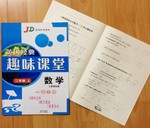题目内容
-William, you ________ the car.
-Sorry.I didn’t see the red light.
[ ]
A.
should have stopped
B.
couldn’t have stopped
C.
must have stopped
D.
needn’t have stopped
答案:A
解析:
解析:
|
此题考查情态动词的用法。句意是:“威廉姆,你应当停下车。”“对不起,我没有看到红灯。”这是对方对威廉姆的责备,意指应该停车而实际上没有停。 |

练习册系列答案
 黄冈经典趣味课堂系列答案
黄冈经典趣味课堂系列答案 启东小题作业本系列答案
启东小题作业本系列答案
相关题目
写作(满分25分)
请从下列任务中选择你 最喜欢的一位,用英语写一篇120词左右的短文。要求很具所给信息做适当发挥,且需包括以下三部分内容:
1. 对该任务的简单介绍;
2. 喜欢该任务的理由;
3. 从该任务身上得到的启示。
|
|
|
|
| Thomas Edison | Helen Keller | William Shakespeare |
| inventor; creative; diligent; full of wisdom | ordinary but great woman; disabled; optimistic; eager to learn | writer; talented; imaginative; man of all ages |
| “Genius is one percent Inspiration and ninety-nine Percent perspiration.” | “… if I had the power of sight for three days.” | “life is a stage…” |


